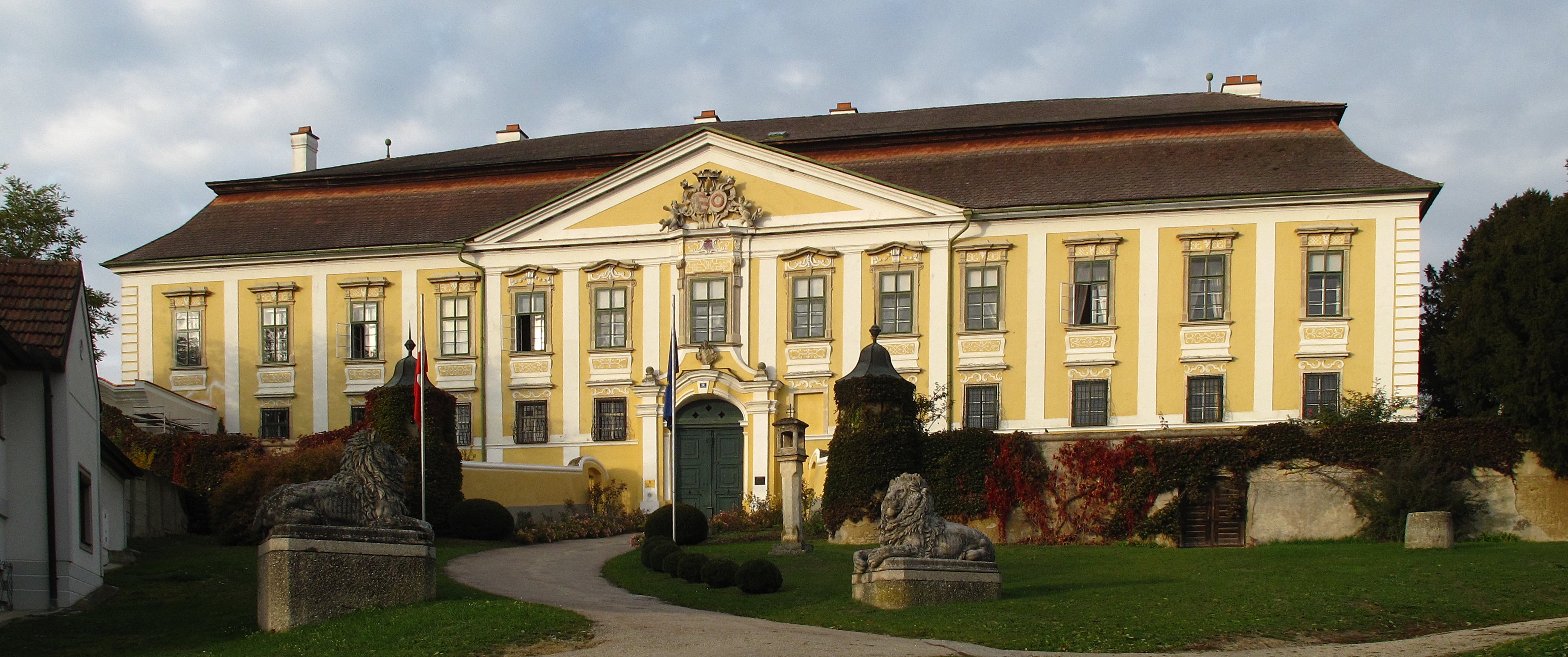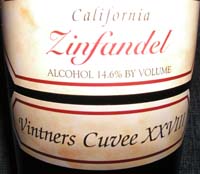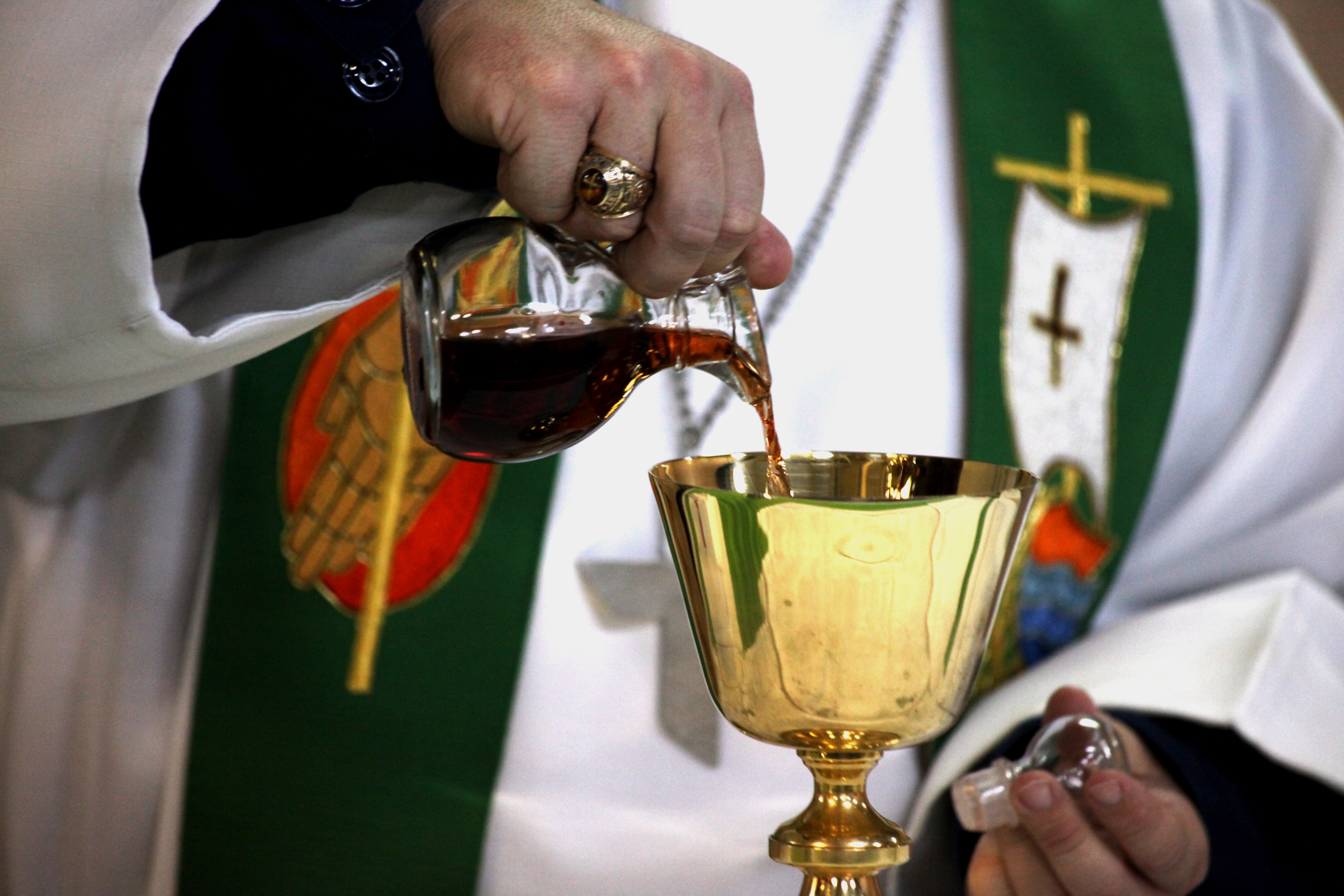|
Schloss Gobelsburg
Schloss Gobelsburg is a winery and castle in the Kamptal wine growing region in Lower Austria, some 50 miles to the north west of Vienna. The estate produces both red and white wines. Wine production on the estate dates to 1171; it is the oldest winery in the Danube region. The structure is a . Gobelsburg specializes in Rieslings produced using traditional methods. Karen MacNeil calls the winery "one of the great wine estates of the world." History The oldest archaeological finds at the Gobelsburg site date back some 4,000 years. In the 1000s, the Kunringer family first built a fortress at the site. The original structure was built in 1074 by , an early member of the . A castle of this name is mentioned in 1178. Having belonged to various aristocratic families, castle and grounds were sold to the Cistercian monks of Zwettl Abbey in 1740 and have been in its possession since. It is a . The Renaissance structure underlying the present face of the castle was renovated in baroque styl ... [...More Info...] [...Related Items...] OR: [Wikipedia] [Google] [Baidu] |
Schloss Gobelsburg 01
''Schloss'' (; pl. ''Schlösser''), formerly written ''Schloß'', is the German language, German term for a building similar to a château, palace, or manor house. Related terms appear in several Germanic languages. In the Scandinavian languages, the cognate word ''slot''/''slott'' is normally used for what in English could be either a palace or a castle (instead of words in rarer use such as ''palats''/''palæ'', ''kastell'', or ''borg''). In Dutch, the word ''slot'' is considered to be more archaic. Nowadays, one commonly uses ''paleis'' or ''kasteel''. But in English, the term does not appear, for instance, in the United Kingdom, this type of structure would be known as a stately home or English country house, country house. Most ''Schlösser'' were built after the Middle Ages as residences for the nobility, not as true fortresses, although originally, they often were fortified. The usual German term for a true castle is ''burg'', that for a fortress is ''festung'', and � ... [...More Info...] [...Related Items...] OR: [Wikipedia] [Google] [Baidu] |
Falstaff
Sir John Falstaff is a fictional character who appears in three plays by William Shakespeare and is eulogised in a fourth. His significance as a fully developed character is primarily formed in the plays '' Henry IV, Part 1'' and '' Part 2'', where he is a companion to Prince Hal, the future King Henry V of England. Falstaff is also featured as the buffoonish suitor of two married women in '' The Merry Wives of Windsor''. Though primarily a comic figure, Falstaff embodies a depth common to Shakespeare's major characters. A fat, vain, and boastful knight, he spends most of his time drinking at the Boar's Head Inn with petty criminals, living on stolen or borrowed money. Falstaff leads the apparently wayward Prince Hal into trouble, and is ultimately repudiated after Hal becomes king. Falstaff has since appeared in other media, including operas by Giuseppe Verdi, Ralph Vaughan Williams, and Otto Nicolai, and in Orson Welles' 1966 film ''Chimes at Midnight''. The operas focus ... [...More Info...] [...Related Items...] OR: [Wikipedia] [Google] [Baidu] |
Merlot
Merlot is a dark blue–colored wine grape variety, that is used as both a blending grape and for varietal wines. The name ''Merlot'' is thought to be a diminutive of ''merle'', the French name for the blackbird, probably a reference to the color of the grape. Its softness and "fleshiness," combined with its earlier ripening, make Merlot a popular grape for blending with the sterner, later-ripening Cabernet Sauvignon, which tends to be higher in tannin. Along with Cabernet Sauvignon, Cabernet Franc, Malbec and Petit Verdot, Merlot is one of the primary grapes used in Bordeaux wine, and it is the most widely planted grape in the Bordeaux wine regions. Merlot is also one of the most popular red wine varietals in many markets. This flexibility has helped to make it one of the world's most planted grape varieties. As of 2004, Merlot was estimated to be the third most grown variety at globally.J. Robinson (ed) ''The Oxford Companion to Wine'' Third Edition, Oxford University Pre ... [...More Info...] [...Related Items...] OR: [Wikipedia] [Google] [Baidu] |
Pinot Noir
Pinot Noir () is a red-wine grape variety of the species ''Vitis vinifera''. The name may also refer to wines created predominantly from pinot noir grapes. The name is derived from the French language, French words for ''pine'' and ''black.'' The word ''pine'' alludes to the grape variety having tightly clustered, pinecone–shaped bunches of fruit. Pinot Noir grapes are grown around the world, mostly in cooler climates, and the grape is chiefly associated with the Burgundy (wine), Burgundy region of France (wine), France. Pinot Noir is now used to make red wines around the world, as well as champagne, Sparkling wine, sparkling white wines such as the Italian wine, Italian Franciacorta, and Wine from the United Kingdom, English sparkling wines. Regions that have gained a reputation for red pinot noir wines include the Willamette Valley (wine), Willamette Valley of Oregon (wine), Oregon; the Carneros (AVA), Carneros, Central Coast (AVA), Central Coast, Sonoma Coast AVA, Sonoma ... [...More Info...] [...Related Items...] OR: [Wikipedia] [Google] [Baidu] |
Zweigelt
The Zweigelt, also known as Rotburger, is a new Austrian grape created in 1922 by Friedrich Zweigelt (1888–1964), who later became Director of the Federal Institute and Experimental Station of Viticulture, Fruit Production and Horticulture (1938–1945). It comprises a crossing between St. Laurent and Blaufränkisch. Wine regions Widely planted in Austria, Zweigelt vines have made inroads in the Canadian wine regions of Ontario's Niagara Peninsula and of British Columbia, with limited plantings in Hungary and New Zealand. In the Czech Republic it is known as ''Zweigeltrebe'' and is the third-most widely planted red-grape variety, comprising approximately 4.7% of total vineyards. It grows in most of the wine regions in Slovakia. , newly established Belgian and Polish vineyards have also started to plant Zweigelt. , Washington state has several small plantings (only a few acres) of Zweigelt, including Wilridge Winery and Perennial Vintners. Naming and synonyms Zweigelt is als ... [...More Info...] [...Related Items...] OR: [Wikipedia] [Google] [Baidu] |
Varietal
A varietal wine is a wine made primarily from a single named grape variety, and which typically displays the name of that variety on the wine label.The American Heritage Dictionary of the English Language, Fourth Edition, 2000.winepros.com.au. Examples of grape varieties commonly used in varietal wines are Cabernet Sauvignon, Chardonnay and Merlot. Wines that display the name of two or more varieties on their label, such as a Chardonnay-Viognier, are ''blends'' and not varietal wines. The term is frequently misused in place of vine variety; the term ''variety'' refers to the vine or grape, while ''varietal'' refers to the wine produced by a variety. The term was popularized in the US by Maynard Amerine at the University of California, Davis after Prohibition seeking to encourage growers to choose optimal vine varieties, and later promoted by Frank Schoonmaker in the 1950s and 1960s, ultimately becoming widespread during the California wine boom of the 1970s. Varietal wines are ... [...More Info...] [...Related Items...] OR: [Wikipedia] [Google] [Baidu] |
Grüner Veltliner
Grüner Veltliner (Green Veltliner) ) is a white wine grape variety grown primarily in Austria, Hungary, Slovakia, and the Czech Republic. The leaves of the grape vine are five-lobed with bunches that are long but compact, and deep green grapes that ripen in mid-late October in the Northern Hemisphere. In 2008, Grüner Veltliner plantations in Austria stood at , and it accounts for 32.6% of all vineyards in the country, almost all of it being grown in the northeast of the country. Thus, it is the most-planted grape variety in Austria. Some is made into sparkling wine in the far northeast around Poysdorf. Along the Danube to the west of Vienna, in Wachau, Kremstal and Kamptal, it grows with Riesling in terraces on slopes so steep they can barely retain any soil. The result is a very pure, mineral wine capable of long aging, that stands comparison with some of the great wines of the world. In recent blind tastings organized by the Austrian Wine Marketing Board, Grüner Veltliners ... [...More Info...] [...Related Items...] OR: [Wikipedia] [Google] [Baidu] |
Riesling
Riesling (, ; ) is a white grape variety that originated in the Rhine region. Riesling is an aromatic grape variety displaying flowery, almost perfumed, aromas as well as high acidity. It is used to make dry, semi-sweet, sweet, and sparkling white wines. Riesling wines are usually varietally pure and are seldom oaked. , Riesling was estimated to be the world's 20th most grown variety at (with an increasing trend),J. Robinson (ed) ''The Oxford Companion to Wine'' Third Edition, Oxford University Press 2006, p. 746: ''"Vine varieties"'', . but in terms of importance for quality wines, it is usually included in the "top three" white wine varieties together with Chardonnay and Sauvignon blanc. Riesling is a variety that is highly "''terroir''-expressive", meaning that the character of Riesling wines is greatly influenced by the wine's place of origin. In cool climates (such as many German wine regions), Riesling wines tend to exhibit apple and tree fruit notes with noticeable leve ... [...More Info...] [...Related Items...] OR: [Wikipedia] [Google] [Baidu] |
Winemaking
Winemaking or vinification is the production of wine, starting with the selection of the fruit, its fermentation into alcohol, and the bottling of the finished liquid. The history of wine-making stretches over millennia. The science of wine and winemaking is known as oenology. A winemaker may also be called a vintner. The growing of grapes is viticulture and there are many varieties of grapes. Winemaking can be divided into two general categories: still wine production (without carbonation) and sparkling wine production (with carbonation – natural or injected). Red wine, white wine, and rosé are the other main categories. Although most wine is made from grapes, it may also be made from other plants. (See fruit wine.) Other similar light alcoholic drinks (as opposed to beer or Liquor, spirits) include mead, made by fermenting Honey#Fermentation, honey and water, cider ("apple cider"), made by fermenting the Apple juice, juice of apples, and perry ("pear cider"), made ... [...More Info...] [...Related Items...] OR: [Wikipedia] [Google] [Baidu] |
Decanter (magazine)
''Decanter'' is a wine and wine-lifestyle media brand. It includes a print and digital magazine, fine wine tasting events, a news website, a subscription website - ''Decanter Premium'', and the ''Decanter World Wine Awards''. The magazine, published in about 90 countries on a monthly basis, includes industry news, vintage guides and wine and spirits recommendations. History and profile Following the success of wine columns in British newspapers, the ''Decanter'' magazine was founded in London in 1975. ''Decanter'' is the oldest consumer wine publication in the United Kingdom. According to author Evelyne Resnick, it has a comparable function in the UK as the ''Wine Spectator'' has in the United States. As of 2011, it was published in 91 countries, including China. Columnists and regular contributors include several Masters of Wine. The magazine focuses mainly on wines available in the United Kingdom, as well as the United States. While it is aimed at consumers, a significant part ... [...More Info...] [...Related Items...] OR: [Wikipedia] [Google] [Baidu] |
Allied-occupied Austria
The Allied occupation of Austria started on 8 May 1945 with the fall of Nazi Germany and ended with the Austrian State Treaty on 27 July 1955. After the in 1938, Austria had generally been recognized as part of Nazi Germany. In 1943, however, the Allies agreed in the Declaration of Moscow that Austria would instead be regarded as the first victim of Nazi aggression, and treated as a liberated and independent country after the war. In the immediate aftermath of World War II, Austria was divided into four zones and jointly occupied by the United Kingdom, the Soviet Union, the United States, and France. Vienna was similarly subdivided, but the central district was collectively administered by the Allied Control Council. Whereas Germany was divided into East and West Germany in 1949, Austria remained under joint occupation of the Western Allies and the Soviet Union until 1955; its status became a controversial subject in the Cold War until the warming of relations known as th ... [...More Info...] [...Related Items...] OR: [Wikipedia] [Google] [Baidu] |
Messwein
Sacramental wine, Communion wine, altar wine, or wine for consecration is wine obtained from grapes and intended for use in celebration of the Eucharist (also referred to as the Lord's Supper or Holy Communion, among other names). It is usually consumed after sacramental bread. History Wine was used in the earliest celebrations of the Lord's Supper. Paul the Apostle writes in 1 Corinthians 10:16: In the Early Church, both clergy and laity received the consecrated wine by drinking from the chalice, after receiving a portion of the consecrated bread. Due to many factors, including the difficulty of obtaining wine in Northern European countries (where the climate was unsuitable for viticulture), drinking from the chalice became largely restricted in the West to the celebrating priest, while others received communion only in the form of bread. This also reduced the symbolic importance of choosing wine of red colour. Eastern Churches in full communion with the Holy See continued t ... [...More Info...] [...Related Items...] OR: [Wikipedia] [Google] [Baidu] |








